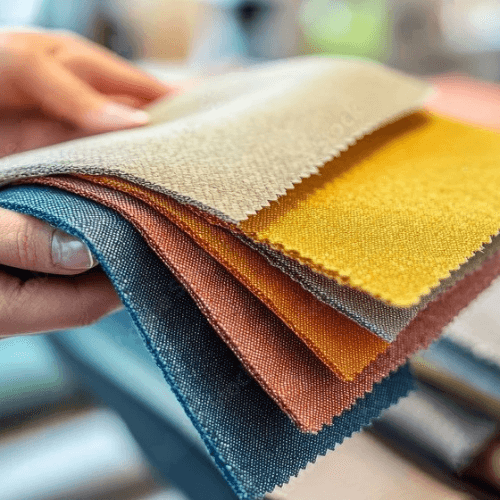Navigating the Global Textile Market: Trends and Insights for 2024

The global textile market is on the brink of significant transformation as we enter 2024. With a projected growth from $638.03 billion in 2023 to $689.54 billion in 2024, at a compound annual growth rate (CAGR) of 8.1%, the industry is poised for robust expansion driven by various factors including urbanization, e-commerce growth, and a rising demand for sustainable practices. This blog delves into the key trends and insights that will shape the textile landscape in 2024 and beyond.
The Growth Trajectory of the Textile Market
The textile industry is experiencing a renaissance fueled by several macroeconomic trends:
– **Urbanization and Population Growth:** The increase in global population, particularly in urban areas, is significantly driving demand for textiles. As more people move to cities, the need for clothing, home furnishings, and technical textiles rises correspondingly.
– **E-commerce Expansion:** The rapid growth of e-commerce platforms has transformed how textiles are marketed and sold. Consumers increasingly prefer online shopping for apparel and home textiles, creating new opportunities for manufacturers to reach broader markets.
– **Sustainability Focus:** There is a growing awareness among consumers regarding sustainability. The demand for eco-friendly textiles made from organic fibers and recycled materials is on the rise. Brands are increasingly adopting sustainable practices to meet consumer expectations and regulatory requirements.
Key Trends Shaping the Textile Industry in 2024
As we navigate through 2024, several key trends are emerging that will significantly impact the textile market:
1. Sustainable Practices
Sustainability is no longer just a trend; it has become a business imperative. Companies are investing in sustainable materials and practices to reduce their environmental footprint. This includes:
– **Use of Organic Fibers:** Natural fibers such as organic cotton, hemp, and bamboo are gaining traction as consumers seek out environmentally friendly alternatives to synthetic materials.
– **Recycling Initiatives:** Many manufacturers are implementing recycling programs to repurpose textile waste into new products, thereby reducing landfill contributions.
– **Transparency in Supply Chains:** Brands are increasingly focusing on transparency regarding their sourcing practices. Consumers want to know where their products come from and how they are made, leading to a push for traceability throughout the supply chain.
2. Technological Innovations
Technology is revolutionizing the textile industry by enhancing production efficiency and product quality:
– **Smart Textiles:** The integration of technology into fabrics—such as sensors that monitor health metrics or temperature-regulating materials—is becoming more prevalent. Smart textiles have applications in sportswear, healthcare, and even fashion.
– **Digital Textile Printing:** This technology allows for more intricate designs with less waste compared to traditional methods. Digital printing is gaining popularity due to its ability to produce short runs economically, catering to fast fashion demands.
– **Artificial Intelligence (AI):** AI is being utilized in various stages of production—from design to quality control—streamlining processes and reducing costs while improving product consistency.
3. Market Dynamics
The global textile market is influenced by several dynamics that affect supply chains and consumer behavior:
– **Geopolitical Factors:** Tensions between major economies can impact sourcing strategies. For instance, concerns over forced labor in certain regions have led many companies to diversify their supply chains away from China.
– **Consumer Preferences:** Shifts in consumer behavior towards fast fashion versus sustainable fashion will shape product offerings. Brands will need to balance speed with ethical considerations as they cater to diverse consumer segments.
– **Economic Recovery Post-Pandemic:** As inflation stabilizes and consumer confidence returns, there is an anticipated recovery in spending on apparel and home textiles. This recovery could lead to increased production levels across various segments of the industry.
### Regional Insights
The Asia-Pacific region continues to dominate the textile market due to its robust manufacturing capabilities and growing consumer base. Countries like China, India, and Bangladesh are at the forefront of textile production, benefiting from lower labor costs and established supply chains.
– **China’s Position:** Despite facing challenges such as declining exports due to geopolitical tensions, China remains a key player in the global textile market. Its ability to adapt quickly through technological advancements will be crucial for maintaining its competitive edge.
– **Emerging Markets:** India is witnessing significant growth driven by rising domestic consumption and an expanding middle class. The country’s focus on sustainable practices could position it favorably in global markets as consumers increasingly prioritize eco-friendly products.
Conclusion
Navigating the global textile market in 2024 requires an understanding of evolving trends and dynamics that influence both production and consumption. As sustainability takes center stage alongside technological innovations, businesses must adapt their strategies accordingly to thrive in this competitive landscape.
By embracing these changes—whether through sustainable practices or technological advancements—textile manufacturers can not only meet consumer demands but also position themselves as leaders in an ever-evolving industry landscape.






